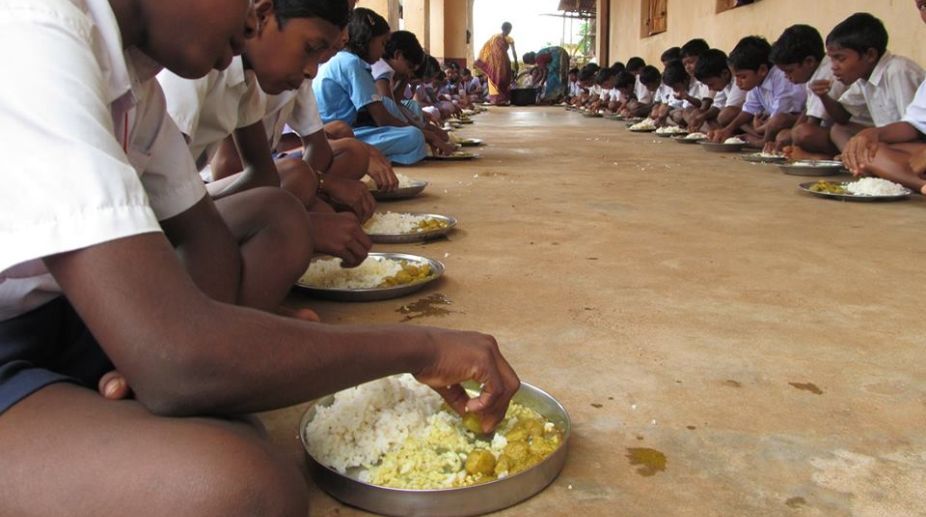According to UNESCO’s Education for All (EFA) Global Monitoring Report 2015, over 1.4 million children aged 6-11 are out of school in India.
It ranks among the top five nations with the highest number of out-of-school children. These children are deprived of education because of several factors including-but not restricted to-poverty and lack of sanitation facilities at the school premises.
In fact, several children are forced to drop out of school, and work to support their family as these families are forced to choose between education and food. In the given scenario, the Mid Day Meal Scheme comes as a blessing in disguise for these families, as it serves as an incentive for children to come to school and for the parents to send their children to school.
Advertisement
Millions of children from across the country only come to school because they are guaranteed a nutritious meal every day. Over 110 million children from across 12 lakh schools are benefitting from the Mid-Day Meal Scheme.
For many of them, this is the first proper meal of the day; for some, it is the only proper meal of the day. This is true to both, urban and rural settings. In urban areas, most people from economically disadvantaged sections of the society are daily wage employees. As such, they cannot afford to miss even a single day of work. They leave early in the day, only to return late at night. With parents leaving early in the morning, for most children the mid-day meal is the first meal of the day.
In rural areas, the situation may be slightly different, but the issue is the same with the economic condition of the family making it difficult for them to afford two square meals a day. In either setting, the promise of a meal is one of the main reasons that prompt people to enroll their children to school. This has two-pronged benefits: (i) it gives children access to education and (ii) it improves their nutritional status-both in line with the objectives of the Mid-Day Meal Programme.
The Scheme has played a crucial role in improving enrollment and attendance in Government and Government-aided schools. In doing so, it is complementing Sarva Shiksha Abhiyan (SSA), the flagship programme by Government of India directed at improving primary education and enabling universalisation of elementary education (UEE).
The improvement in attendance is directly related to the willingness of children to come to school and the improvement in their nutritional profile; as it is highly unlikely that healthy children will miss the school because of illness. The programme also addresses the issue of dropout rates as many people, who would otherwise force their children to leave school after they reach a specific age and work to support the family, allow them to continue studying.
The programme also seeks to address the problem of classroom hunger. When children skip their breakfast, they are not able to concentrate on learning because of hunger, and as a result, their performance in the classroom is affected. As opposed to this, when they have a hearty meal, they actively participate in school activities; not just learning, but also in extracurricular activities. The nutritious meal doesn’t just fuel their body, but also their mind.
When children are deprived of their right to education, they have to forfeit their dreams and aspirations.
The Mid-Day Meal Programme combines education with food security. It gives children the opportunity to get proper education, thus giving them the hope and courage to pursue their dreams and aspirations for a better life.
(Chairman, The Akshaya Patra Foundation)
Advertisement











